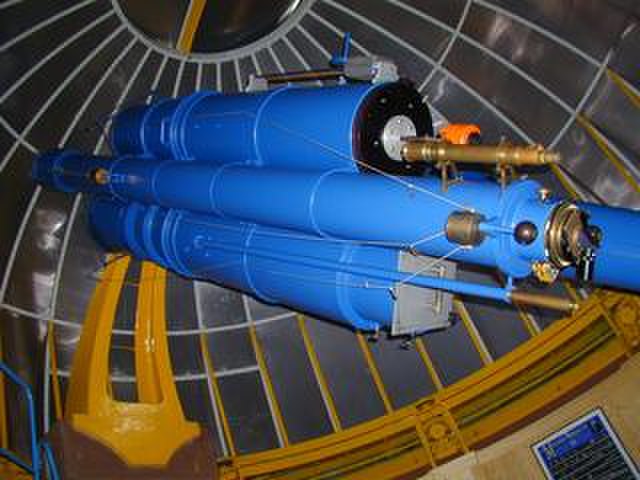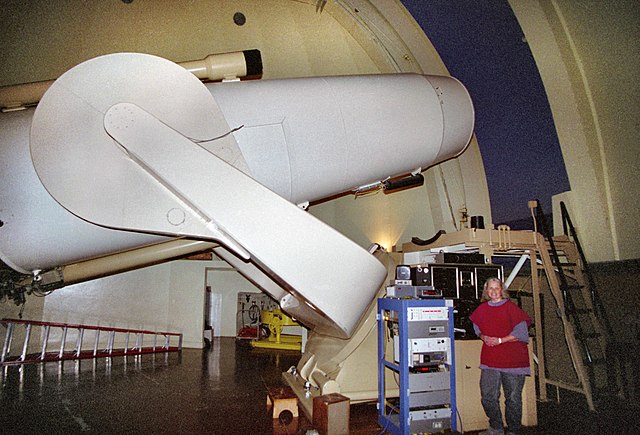Maximilian Franz Joseph Cornelius Wolf was a German astronomer and a pioneer in the field of astrophotography. He was the chairman of astronomy at the University of Heidelberg and director of the Heidelberg-Königstuhl State Observatory from 1902 until his death in 1932.
Max Wolf
The Bruce double astrograph at Heidelberg Observatory
Astrophotography, also known as astronomical imaging, is the photography or imaging of astronomical objects, celestial events, or areas of the night sky. The first photograph of an astronomical object was taken in 1840, but it was not until the late 19th century that advances in technology allowed for detailed stellar photography. Besides being able to record the details of extended objects such as the Moon, Sun, and planets, modern astrophotography has the ability to image objects outside of the visible spectrum of the human eye such as dim stars, nebulae, and galaxies. This is accomplished through long time exposure as both film and digital cameras can accumulate and sum photons over long periods of time or using specialized optical filters which limit the photons to a certain wavelength.

An image of Orion's Belt composited from digitized black-and-white photographic plates recorded through red and blue astronomical filters, with a computer synthesized green channel. The plates were taken using the Samuel Oschin Telescope between 1987 and 1991.
The large 48" Oschin Schmidt Camera at Palomar Observatory
Henry Draper with a refractor telescope set up for photography (photo probably taken in the 1860s or early 1870).
The earliest surviving dagerrotype of the Moon by Draper (1840)






